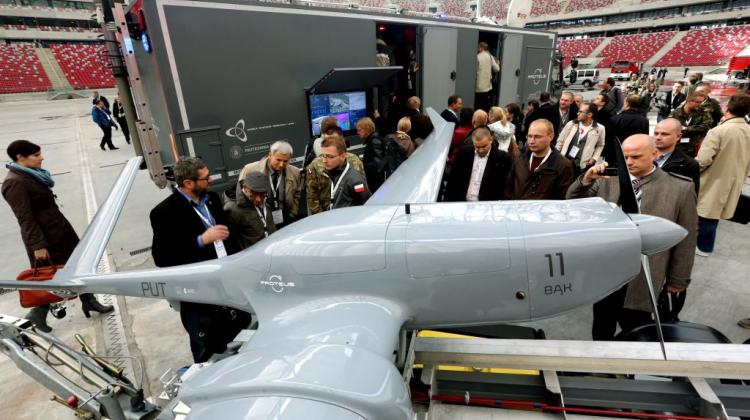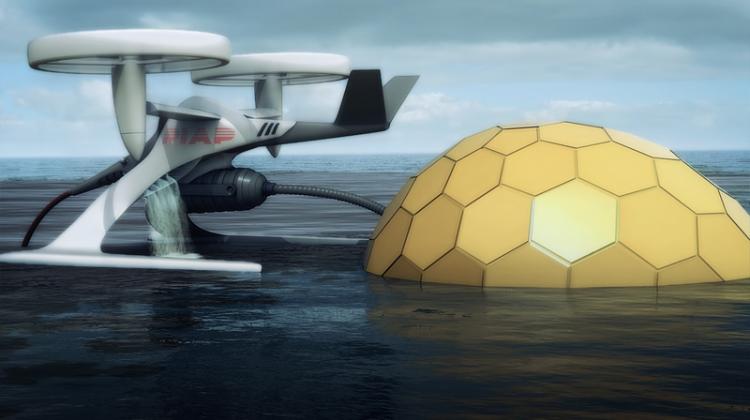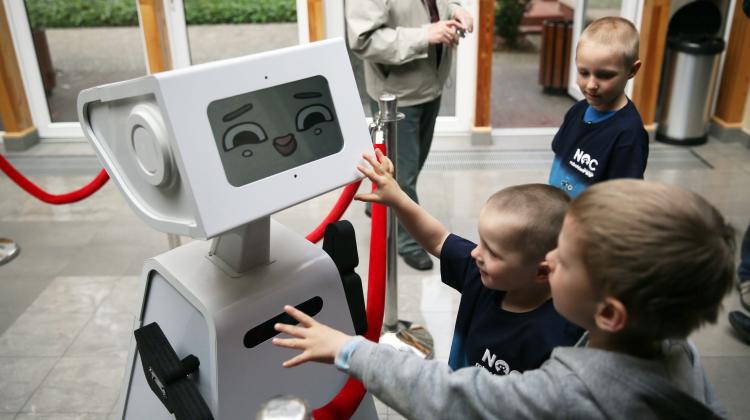Polish robots help emergency services

Capabilities of intervention robots, mobile command centre and unmanned aircraft were presented during a show at the National Stadium. These are the components of the Proteus system supporting the operations of emergency and anti-terrorist services.
A car belonging to criminals, that could carry explosives, collided with a tanker transporting chlorine. Mobile Command Centre and Mobile Robot Operators Centre arrive on site. Small mobile robot sent to that tanker identifies the spot that leaks poisonous gas. During that time, medium and large robots extract packages that may contain explosives from the criminals’ car. Robots also help firefighters deploy a harmful gas -damping water curtain. Finally, the devices dispose of explosives in a safe place. This is an outline scenario of the exercise, which took at the National Stadium.
The show marked the five years of work on the project "Integrated mobile system supporting counter-terrorism and crisis operations - Proteus" . This project, with budget in excess of PLN 68 million, was completed by a consortium of scientific institutions under the leadership of the Industrial Research Institute for Automation and Measurements (PIAP) in Warsaw.
"Proteus is designed to support various services in dealing with emergencies" - said Proteus project manager, Dr. Piotr Szynkarczyk of PIAP. He added that the system developed by his team could provide support for operations related to forest or building fires, floods, construction disasters or acts of terrorism.
The project developed a small, medium and large mobile robot. Small robot weighs less than 60 kg, it can get to hard to reach places. It can be equipped with sensors and devices for soil, liquid and gas sampling. Medium and large robots can be equipped with manipulators that can move larger objects (28 and 40 kg).
The system also includes an unmanned aircraft that provides information about how the situation looks from the air. With specialized sensors the aircraft will can identify the substances that burn in the fire. The aircraft with a wingspan of 6 m is launched from a catapult, and lands using a parachute.
The component that integrates the various operations is the Mobile Command Centre. "This is where decisions are made, analyses performed and commands issued" - explained Szynkarczyk. Centre, which receives all the operational information, is equipped with modern software and touch screens.
The project has also developed the Mobile Robot Operators Centre, which carries the robots and controls them, as well as radios with sensors that monitor the safety of rescuers, as well as a simulator, where you can train controlling the robot.
"We can not afford not to use sophisticated equipment" - PIAP Director, Dr. Jan Jabłkowski said at a conference. He added that the use of robots reduces the costs associated with the loss of human life. He admitted that it involves not only social costs, but also the financial costs associated, for example, with the treatment of injured officers, compensation payment and training new experts.
Proteus components were used in the removal of the effects of floods in Poland in 2010. With the support of the system, emergency services performed the analysis of satellite imagery of flooded areas and prepared recommendations for quick removal of water from flooded areas.
PAP - Science and Scholarship in Poland
lt/ ula/ krf/ mrt/
tr. RL
Przed dodaniem komentarza prosimy o zapoznanie z Regulaminem forum serwisu Nauka w Polsce.
















